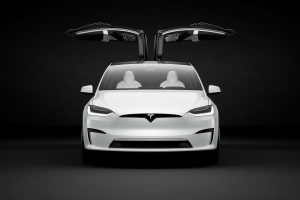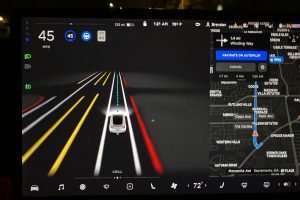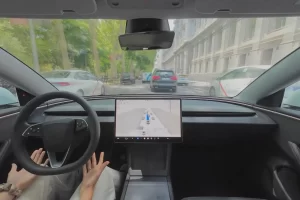Key Takeaways
- Tesla China’s new “City Autopilot” feature, part of the 2024.45.32.12 software update, is currently available only for AI4 vehicles.
- Videos from Chinese social media highlight the feature’s promising real-world performance, showing human-like and confident driving.
- User @ray4tesla mentions the system’s smoothness and caution, but also areas needing improvement such as lane recognition and traffic light management.
- Despite initial skepticism due to complex traffic conditions, many users found the system exceeded expectations.
- Tesla China’s “City Autopilot” is in its first iteration and not hands-free, but has great potential for future enhancements.
- The system used publicly available video footage of Chinese roads to train its models, showcasing Tesla’s resourcefulness in development.
Tesla continues to push the boundaries of autonomous driving with its innovative “City Autopilot” feature, newly released in China. This feature, part of the 2024.45.32.12 software update, is creating waves in the automotive world and prompting discussions about the future of urban mobility.
Is This the Future of City Driving?
Tesla’s “City Autopilot” is currently available exclusively for AI4 vehicles. It boasts promising real-world performance, as evidenced by various videos uploaded on Chinese social media platforms. Users have observed the vehicle’s human-like and confident driving, instilling a new level of trust in automated driving systems.
First Impressions: A System with Potential and Room for Improvement
Smoothness and Adaptability
According to longtime Tesla enthusiast @ray4tesla, the “City Autopilot” delivers a seamless and cautious driving experience. The system distinguishes itself by being tactically smooth, handling urban traffic with the finesse of a seasoned human driver. Such adaptability is critical, especially in the diverse and often chaotic traffic situations commonly found in major Chinese cities.
Areas for Development
However, like any cutting-edge technology in its initial phase, Tesla’s “City Autopilot” is not without its challenges. The primary areas needing refinement include:
- Lane Recognition: Accurately recognizing and adapting to various lane types, such as bus and bike lanes, remains a challenge.
- Traffic Light Management: Effective management and response to traffic signals need enhancement.
- Intersection Navigation: Choosing the correct lane for going straight or making left turns also requires improvement.
Overcoming Skepticism: Exceeding Expectations
Before its release, skepticism about its performance in complex traffic conditions and the dynamic behaviors of Chinese drivers and pedestrians was rampant. Many expected it to struggle under such pressures. Yet, post-launch reviews are largely positive, with users reporting that the system has often surpassed their expectations.
The Path Forward: Building on a Strong Foundation
The First Iteration
It is important to note that Tesla China’s “City Autopilot” is not fully hands-free in its current form. This is the first iteration of what promises to be a continuously evolving technology. The use of publicly available video footage of Chinese roads for training models is a testament to Tesla’s innovative approach. It also highlights the company’s ability to adapt and develop features rapidly, even with stringent data restrictions.
Training Without Boundaries
Tesla’s decision to utilize open-source video for training purposes reflects a strategic move, circumventing local data collection challenges. Leveraging global open data resources, Tesla not only accelerates its learning curve but also demonstrates a scalable model for other regions facing similar regulatory landscapes.
A Significant Milestone in Autonomous Driving
Tesla’s bold steps with the “City Autopilot” reflect its commitment to leading the charge in autonomous driving technology. While the system shows great promise and some areas for improvement, it undeniably sets a precedent in urban driving solutions. As Tesla continues to refine and update this feature, we can expect even more remarkable development, impacting the future of urban transportation worldwide.





